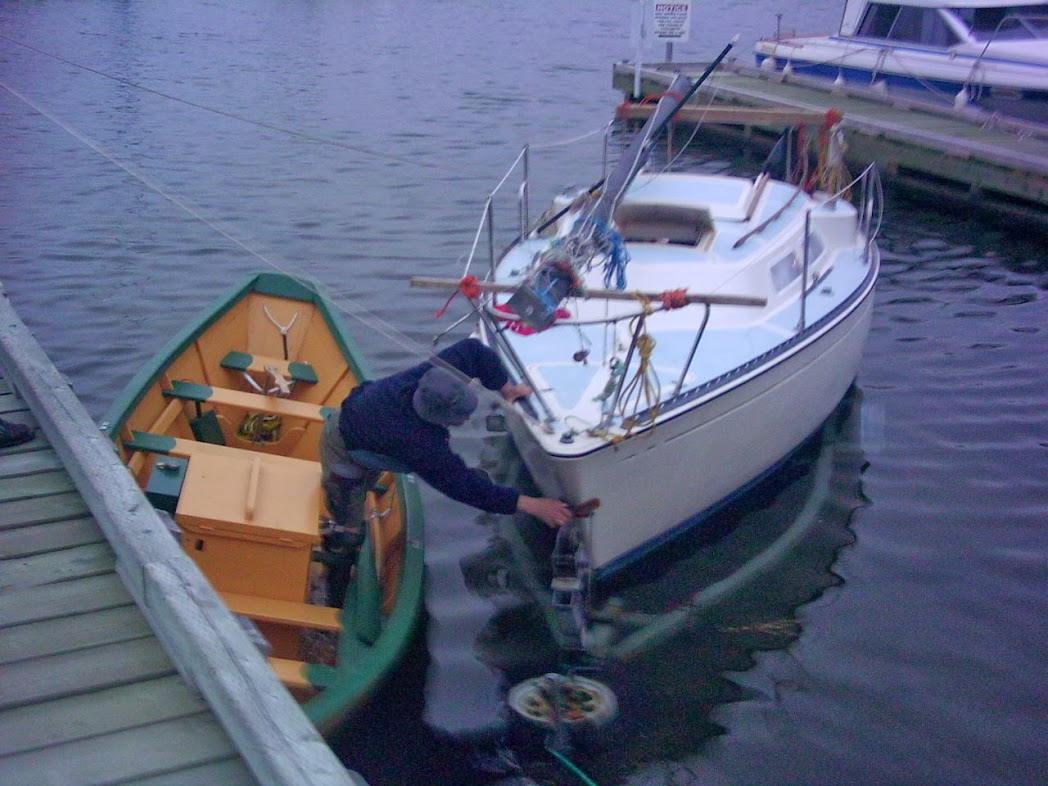 |
| Sailing to Exploits |
This was a great excuse to see what it was like to live aboard Serenity for a few days, and with a guest. Our friend, Cheri, likes boats and camping, and often accompanied us on our little adventures. She also had family with a summer home at Exploits. It would be tight quarters, but manageable.
 |
| Chrei |
Exploits Islands are about 20 NM from Lewisporte. It is a resettled community which once had a population approaching 900 people, but after the government's resettlement program of the 1960s, only two people called the place home all year, another cousin, Richard Wells, and his partner Lydia Budgell.
My mother was born and raised at Exploits, and for a couple of decades, my family looked after the old Wells family home. Selling of the properly a few months earlier was actually what made it possible to buy the sailboat. Heading there was something I had done so many times since being a child, that I could almost do it with my eyes closed. I had also made the trip aboard other people's sailboats, so it should not present much of a challenge.
The weather on that Friday evening was good for our trip. A SW wind of under 15 kts made for fairly comfortable conditions, and we made good time. We had in mind that we would put into a sheltered harbour on one of the islands, if it didn't look like we would be able to make it all the way before dark, but everything was working in our favour.
Arriving safely was simple enough, but finding a place to dock was a challenge. Exploits Islands is a pretty popular place, and with the added draw of the christening, dock space was hard to come by. Without a dinghy, I needed to be on a wharf on the eastern island. We got permission to tie up to a converted fishing vessel owned by Cheri's father-in-law on a wharf also used by by next door neighbour in Lewisporte.
The next day it was raining. Serenity does not have a dodger, so I had to rig up an 8'x10' tarp over the boom to help keep us dry. It did not extend over the BBQ, so cooking on that appliance still required a rain jacket.
For most of Saturday afternoon and evening, Roxanne and I were off to the ceremony and visiting with family. Cheri stayed aboard the tiny boat and read, while listening to the rain tap on the cabin.
On Sunday, the weather cleared, and patches of blue sky could be seen.
 |
| Serenity rafted up with Penney's Luck |
Time for a quick look around the harbour before making ready, and sailing back to Lewisporte.
 |
| Looking NW from Squid Cove |
With my old speedboat, I could make the trip from Lewisporte to Exploits in less than an hour. In a sailboat, the same trip takes 3 to 4 hours. With the speedboat, we needed a place to stay once we got there, which had to be maintained, and the fast boat burned about $25/hour in fuel, meaning a weekend could cost $75, if you used the boat much while there. With the sailboat, we are comfortable wherever we tie up, and $75 in fuel would probably last a season or three.







































